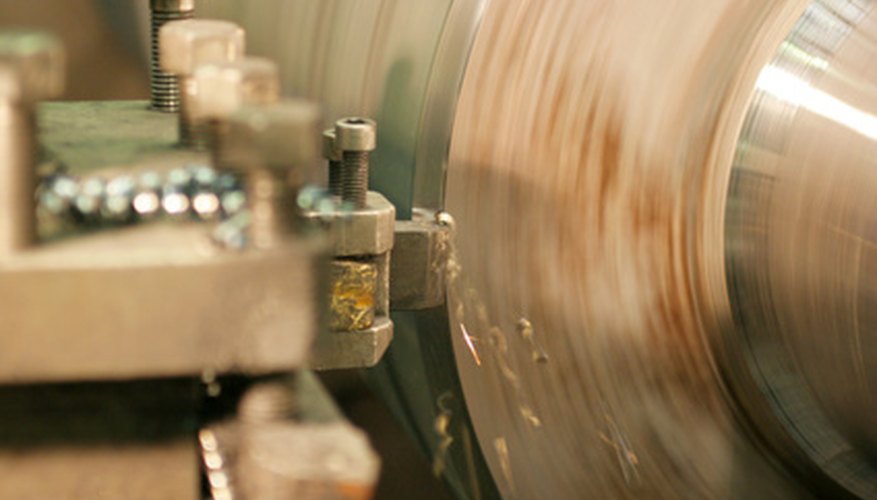The heating and cooling process affects the hardness of steel in varying degrees. Relatively high-carbon, high-alloy steels like American Iron and Steel Institute (AISI) 4130 must be heat-treated before they can be machined or formed. Two processes change the hardness of 4130, annealing and normalising, both of which may be applied depending on the desired application of the steel.
General Chemistry
AISI 4130 steel has a specialised chemical composition that gives it a unique set of properties. The steel has a carbon content between 0.28 and 0.33 per cent, a chromium content between 0.8 and 1.1 per cent, manganese content between 0.7 and 0.9 per cent, molybdenum between 0.15 and 0.25 per cent and a silicon content between 0.15 and 0.35 per cent. This chemistry creates a steel with some corrosion resistance and the ability to be hardened.
Annealed
Annealing is the process of changing the molecular structure of steel to its equilibrium state. It can be analogous to candy making if one imagines a candy syrup slowly forming crystals. As the crystals grow, the material becomes less malleable and more difficult to bend. This process occurs in steel when it is worked, machined or heated. When 4130 is heated and held at 829 degrees C, the crystalline structure of the steel begins to revert back to a malleable state. Fully annealed 4130 has a tensile strength of 36832 Kilogram per square inch and a Rockwell hardness of 95.
- Annealing is the process of changing the molecular structure of steel to its equilibrium state.
- When 4130 is heated and held at 829 degrees C, the crystalline structure of the steel begins to revert back to a malleable state.
Normalised
Normalising is a similar process to annealing except that the metal is heated to a higher temperature and cooled slowly over hours or even days. This slow cooling removes almost all the internal stress within 4130 steel and creates a ductile material with a higher tensile strength compared to annealed steel at 106,000 psi. The steel has the same Rockwell hardness and other physical properties but is much more resilient when machined.
